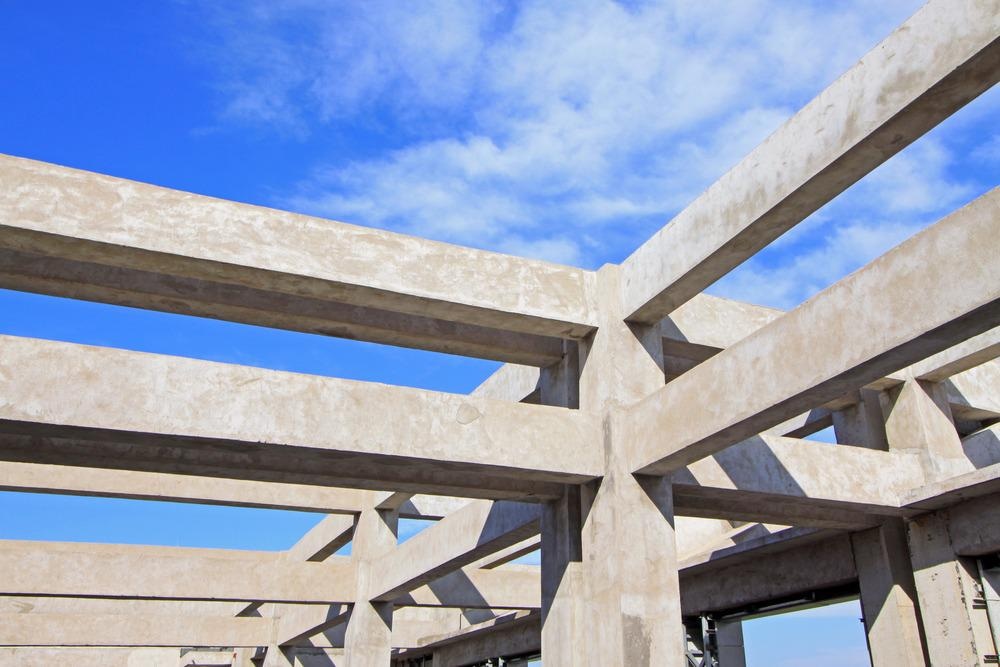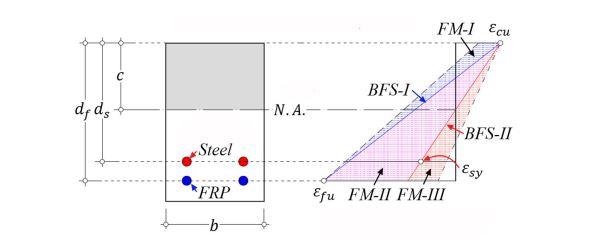Fiber-reinforced polymer or FRP composites are commonly implemented in the construction field for many purposes, such as cladding repair and strengthening work. A study in the journal Materials considers the structural performance of hybrid GFRP with steel RC beams.

Study: Flexural Strength Design of Hybrid FRP‐Steel Reinforced Concrete Beams. Fiber Reinforced Materials for Buildings Strengthening. Image Credit: chinahbzyg/Shutterstock.com
Construction accounts for over 30% of the global FRP composite sector, second only to the automobile industry. In these industries, FRP composites are often used due to their exceptional strength-to-weight ratio.
The FRPs are encased in a "matrix" that binds the fibers collectively, distributes weights between them, and secures them against external conditions within the environment and physical impact. The FRP composites are helpful because of the combination of two different components.
The benefits of both FRP and metal materials may be appropriately leveraged to boost a concrete beam's compressive strength and ductility, by properly assembling a hybrid composition of cross‐sectional fiber-reinforced polymer (FRP) rods and metal bars in the tensile area of the beam.
A technique for flexural strength development of hybrid FRP metal-reinforced concrete (RC) beams has been presented in the research paper. The context of the physical properties of the reinforced concrete is presented in accordance with the most recent codified longitudinal reinforcing criteria to ensure ductility.
The acceptable reinforcement ratio limits for three typical flexural failure modes are provided in terms of design. Following this, a computation technique for notional flexural strength of hybrids FRPsteel RC beams is created using the theoretical foundations of equilibrium and compliance.
The suggested generic calculation technique is also suitable for gently reinforced and substantially reinforced beams that are frequently used but seldom investigated, in addition to the usual medium reinforced beams.
Because of its benefits, such as high tensile strength, ease of fabrication, lightweight nature, and non-corrosive qualities, the development of fiber-reinforced polymer (FRP) for flexural reinforcement of concrete elements has grown in favor. However, the weak strength and durability of FRP reinforced concrete (RC) beams can cause broad fracture width, considerable deformation and low ductility (deformability) at the final stage and limits their use.

Features of strain distribution on a cross‐section of hybrid RC beam at the ultimate state. (Note: N.A. = neutral axis.) Image Credit: Zhou, B., et al, Materials
This comprehensive study uses various measurements to consider the flexural effectiveness of hybrid FRP steel-concrete beam in the past few years. The research was conducted to determine the system reliability and load-carrying capacity of combination AFRP steel or aramid fiber-reinforced polymer RC beams, and the positive impact of combining steel reinforcement on ductility and deflection early points, maximizing ductility at the ultimate stage.
Furthermore, the total flexural behavior of hybrid FRP steel and RC beams was predicted using the moment-curvature equation with the tensions stiffening effect.
The study found that inserting a sufficient quantity of reinforcing steel into glass fiber reinforced polymer (GFRP) RC beams might significantly improve structural performance.
In order to estimate the various flexural failure mechanisms of composite GFRP steel RC beams, the methods of performance ratio were developed. A flexural calculation model for hybrid RC beams was also suggested, with the recommended flexural failure mechanism (steel bending preceded by concrete crushing).
The Korean researchers experimented and analyzed the strength properties and bending of high-strength concrete beams strengthened with numerous layers of reinforcements and a combination of multiple reinforcement materials such as GFRP, steel, and CFRP or carbon FRP bars.
The findings revealed that hybrid reinforcement with steel bars regulated and enhanced the low post-breaking stiffness, significant deflection, low ductility, and severe crack propagation of big crack width of FRP bar reinforcing bars.
The structural condition of concrete columns can be strengthened with a mix of steel and glass fiber reinforced plastic (GFRP) bars. The flexural strength and maximum displacement of hybrid FRP steel RC beams defined by various flexural failure modes were numerically estimated using an enhanced moment-curvature relationship that took tension stiffening into account.
Because the tensile stiffening effect inside the tensile zone and thus the softening tendency of compression concrete are both taken into account, it is relevant to beams with typical flexural failure mechanisms.
The post crack characteristics of tensile concrete were used to approximate the tension stiffening effect. To accurately model the weight-carrying ability and distortion progression of concrete beams strengthened using a blend of AFRP, GFRP, and metal bars, the constituent material variations and binding effectiveness between the reinforcing bars and concrete core were included in a 3D FE model.
These could pass bonding tests, including four-point bending tests, which were used to investigate the influence of GFRP rebar bonding effectiveness on hybrid GFRP steel RC beams' flexural capacity and evaluate their flexural behavior. The structural performance of hybrid GFRP with steel RC beams is ultimately greater.
Reference:
Zhou, B., et al. Flexural Strength Design of Hybrid FRP‐Steel Reinforced Concrete Beams. Fiber Reinforced Materials for Buildings Strengthening. Materials. Published: 25 October 2021 https://www.mdpi.com/1996-1944/14/21/6400